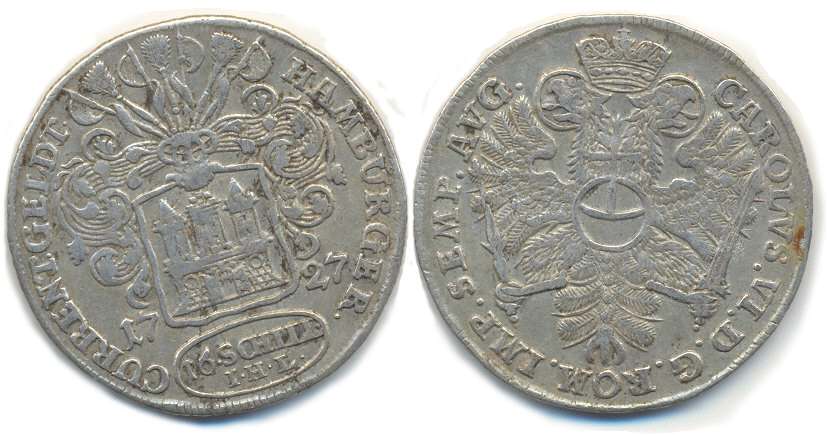Mark (Lübisch)
From Marteau

16 Schillinge Lübisch Courant Geldt or 1 Marck Lübisch
History
Hamburg's and Lübeck's traditional currency unit integrated in the pattern of German currency units with 2 Marck Lübisch matching one Reichs-Gulden, 3 Marck Lübisch matching one Reichsthaler currency unit and with 4 Marck Lübisch matching one Reichsthaler species. Issued in coins of 16 Schillinge. The term "Courant Geldt" in the inscriptions stood for the difference of courant money circulating in coins and bank money referred to in cashless transactions.
The Marck Lübisch dated back to the decree of 1501 in which the "Wendischer Münzverein" had decided to issue silver coins of 2/3 and 1/3 Mark Lübisch (32 or 16 Witten respectively). Lübeck and Lüneburg issued small numbers of the new coins (their silver weight was 13.5 and 6.7 g) of which two had to match one gold Gulden of Lüneburg. In 1504 a new decree made large silver coins the basic currency. Lübeck, Lüneburg, Hamburg and Wismar decided that the new coins should be issued in whole, half and quarter pieces of the Marck with a silver weight of 20, 10 and 5 g. Only Hamburg and Lübeck sticked, however, to the decision: From about 1670 onwards both cities issued coins of 32, 16, 12, 8, 4, 2, and 1 Schilling with 32 Schilling matching one Reichs-Gulden, 48 Schillinge matching one Reichsthaler (unit of accounting) and 64 Schillige matching one Reichsthaler Species.
Subpage of the Marteau Platform of Research in Economic History
